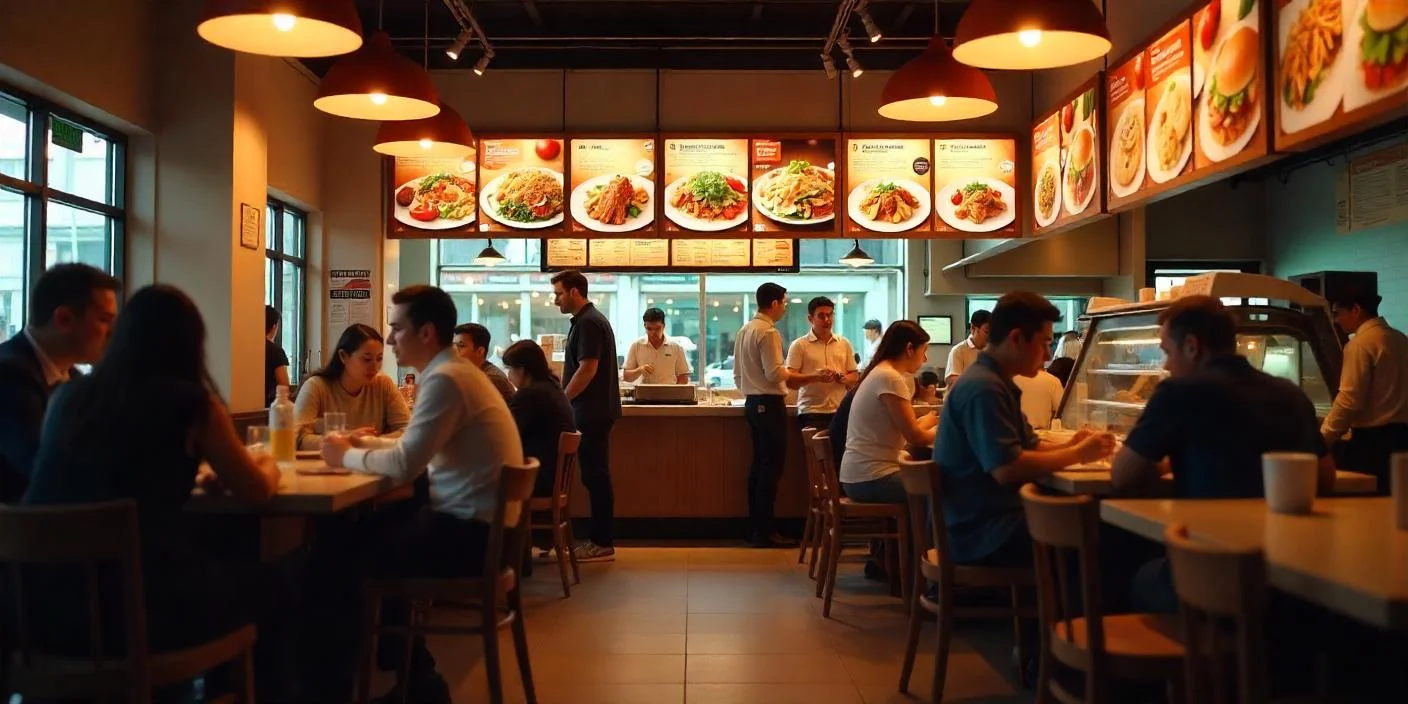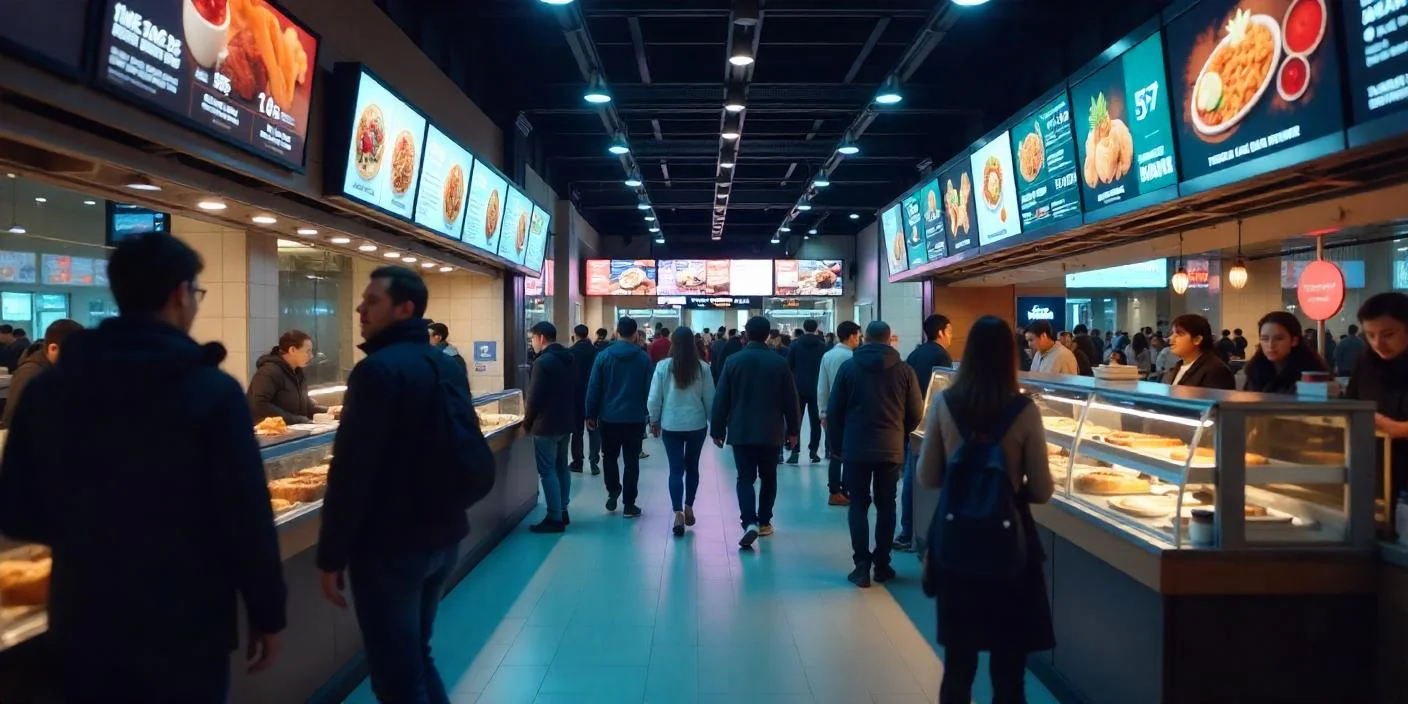The restaurant industry is, as we know, a constantly developing sector in the modern world due to the increasing trends of using technologies. Another of the new trends that have recently emerged in the culinary market is the use of digital menus in the restaurant business. These modern equivalents of paper-based menus are transforming the relationships between restaurants and patrons as well as the work processes. McDonald’s, like many other participants in the restaurant industry, has been implementing its digital strategy under the guidance of its CEO, Steve Easterbrook, since 2015.
Such measures as digital menus are part of a larger phenomenon that is defining the future of dining experiences. Since the operation of restaurants is gradually shifting to digital, this is likely to have a huge implication on the economy.
Now let us take a closer look at what we are going to call digital menus, or what they are, what they can offer, and what can possibly go wrong with them.
Understanding Digital Menus in the Restaurant Industry:
Digital menus, sometimes referred to as electronic menus or e-menus, are electronic versions of paper-based menus. The incorporation of smartphones and other digital devices in our society today has enabled businesses to come up with new methods of serving the customer and organizing their operations. The use of digital menus has some advantages over paper menus, which makes their use appealing to restaurant owners seeking something new that will give them the edge in a competitive market.
Features of Digital Menus in the Restaurant Industry:
Digital menus are known to have many qualities that distinguish them from paper menus. Here are some of the most notable ones:
Customizable Design for Digital Menus in the Restaurant Industry:
Digital menus have no limitations to the designing aspect and can be used to represent the restaurant’s dishes in the best way possible. It ranges from the font style to the color, which means that there are a lot of choices that can be made in order to achieve the right branding when it comes to the menus.
Dynamic Pricing:
But one of the most advantageous aspects of the use of digital menus is that they can be updated to reflect changes in price. This feature is advantageous to the restaurant owners since they are able to change the prices of the meals in real time depending on the time of the day or even special occasions.
Streamlined Operations:
There are many opportunities with digital menus; one of the biggest is the ability to potentially decrease the need for a workforce in restaurants. This means that the establishments can be managed with fewer numbers of people, thus reducing costs and improving on the gains.
Enhanced Ordering Experience:
Electronic menus are not just mere posters, as they have a lot of functions. Customers are able to use the menu to place orders from their own devices. The efficiency of this system lessens the waiting time and the possibility of errors, which is beneficial to the customers.
Data Collection for Digital Menus in the Restaurant Industry:
Digital menus are a valuable source of information about customers. It allows restaurants to record order history and payment methods and even clients’ feedback to make appropriate decisions and advertising campaigns.
Benefits of Digital Menus in the Restaurant Industry:
Digital menu boards, a subset of digital menus, offer several advantages for restaurant owners:
Enhanced Efficiency:
The establishments that have embraced digitized menus have seen their order quality improve, and delivery time is also reduced. Opting for the self-service ordering process helps customers, especially when placing takeout orders. Further to this, the ability to communicate in different languages limits language barriers, thus improving the total customer experience.
Reduced wait times:
Digital menu boards allow the customer to continue to be attentive to a screen while waiting for their food. With bright colors and engaging content, customers will not mind waiting so much.
Revenue Growth for Digital Menus in the Restaurant Industry:
Quite possibly, one of the biggest benefits of implementing digital menus is the possibility to increase revenue. Digital menus tend to help restaurants increase their sales, and desserts usually have the highest rise in sales. This may be due to the fact that the company uses artificial intelligence to recommend items for purchase based on a customer’s profile and prevailing circumstances.
Aesthetic Appeal:
Electronic menus are attractive displays that are used in restaurants to present pictures and videos of the meals of the day. They improve the general appearance and make the customers look at them.
Ease of Management for Digital Menus in the Restaurant Industry:
In comparison to a black/white board or a printed menu, the digital boards are easier to manage when it comes to change and updating. Decisions can be made quickly, and this means that menu information can easily be updated to reflect the current season and current promotions.
Automated menu changes:
That is, digital menu boards have features such as dayparting to make it change between different menus during the day. This makes it possible to offer the right products at the right time or if there are special offers available.
Promotional Capabilities:
Because of the flexibility of the digital menu boards, promotional messages can be timed, hence placing a special or a limited stock item at the right time. It is a worthwhile strategy because it increases the promotional impact and thus sales.
 Types of Digital Menus
Types of Digital Menus
Tablets:
Tablets are a cheaper and more effective solution for digital menus. They can be placed on tables or at central kiosks for reading and order purposes, respectively. Digital menus are most evident in self-ordering kiosks used in fast food outlets such as Burger King and McDonalds, where tablets are incorporated.
Augmented Reality:
Selected restaurants have augmented reality menus where customers can look at the menu in 3D form before placing an order. It is fun and engaging and improves customer experiences, especially in restaurants that offer high-quality services.
Interactive Tables:
Clients in the higher-end restaurant establishments are presented with interactive tables as part of their dining experience. These tables can show live feeds of the food being prepared, which brings in elements of trust and fun. Also, customers can engage themselves in games or watch some animations; this is in addition to the experience they get from the food products.
Pros and Cons of Digital Menus
While digital menus offer numerous benefits, they also come with some potential drawbacks:
Pros:
Time and Resource Savings: Digital menus make work easier and are environmentally friendly since they eliminate the frequent use of papers.
Enhanced Customer Satisfaction: It is self-explanatory that use of pictures and other forms of content that can change automatically makes the dining experience to be more interesting, hence improving the customer experience.
Sales Improvement: Digital menus have been proven to boost sales because they have the potential to capture attention and sell menus.
Cons:
Staff Discontent: Implementing digital menus may cause employees’ discontentment because staff feel they are unnecessary and they are taking their jobs away.
Initial Expenses: Going digital entails some capital investment in the hardware and software, which could be a problem for some organizations.
Increased Electricity Consumption: Although digital menus are operated through batteries, they also consume electricity, which results in increased electricity bills.
In conclusion, digital menus are a great innovation in the restaurant business, which provides the potential of a number of attributes and advantages that may benefit customers as well as restaurant owners. There are some drawbacks that need to be discussed; however, the overall benefits that digital menus bring to efficiency, sales, and customer satisfaction make them a good investment for progressive facilities. It is essential to note that the incorporation of digital innovations such as digital menus will without doubt be some of the key drivers to the future dynamics of eating places.



 Types of Digital Menus
Types of Digital Menus


